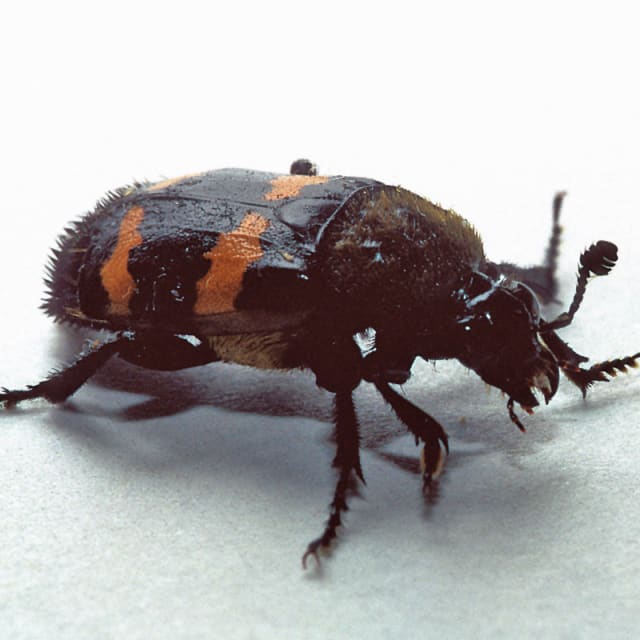Do Burying Beetle Bite?
Learn if Burying Beetle bite, what you should do if you get bitten by them, and other interesting information.
The Burying Beetle (Nicrophorus spp.) is an oblong insect recognized for its black body adorned with distinctive red markings. Predominantly found in forested areas and meadows, these beetles are unique for their carrion-burial behavior which plays a crucial role in ecosystem balance.

| Characteristic | Details |
|---|---|
| Scientific Name | Nicrophorus spp. |
| Body Shape | Oblong |
| Body Segments | Head, Thorax, Abdomen |
| Skin Type | Exoskeleton |
| Color | Black with red markings |
| Diet | Carnivorous |
| Lifecycle | EGG, LARVA, PUPA, ADULT |
| Habitat | Forests, Meadows |
| Geographical Distribution | North America, Europe, Asia |
| Age of Sexual Maturity | After 1-2 months |
| Unique Features | Buries dead rodents for larva food |
| Predators | Birds, Small Mammals |
| Conservation Status | Several species are threatened |
Here are 3 interesting facts about Burying Beetle:
Here is the scientific categorization of Burying Beetle, providing a glimpse of their position in the biological hierarchy:
| Taxonomic Rank | Name |
|---|---|
| Kingdom | Animalia |
| Phylum | Arthropoda |
| Class | Insecta |
| Order | Coleoptera |
| Family | Silphidae |
Burying Beetle's life is a journey of transformation - an adventure marked by the following captivating stages:
EGG → LARVA → PUPA → ADULT
The Burying Beetle's lifecycle unfolds in forests and meadows, where it lays eggs in carcasses it has buried. These serve as a food source for the larvae that subsequently emerge, grow into pupae, and finally mature into adult beetles to continue the cycle.
Burying beetles, also known as sexton beetles, show unique adaptations for survival. The beetles locate a carcass, bury it by removing the soil underneath, and then prepare it for their larvae by removing fur or feathers and shaping it into a brood ball.
These beetles also exhibit parental care, a rarity among insects. Both parents feed regurgitated carrion to their young. A fascinating adaptation includes the ability to detect a carcass from miles away, demonstrating their keen sense of smell.
Now, let's look at how they help maintain the balance in the ecosystem:
Despite their popularity and predator status, Burying Beetle encounter several threats as well:
If you're interested in learning about at some more interesting insects, here are two suggestions for you, below 👇
Learn if Burying Beetle bite, what you should do if you get bitten by them, and other interesting information.
Check other interesting bugs:
Learn what food Burying Beetle eat, and also information about how they eat and drink.